From protests to coronavirus, a mask revolution has been taking place in Hong Kong
Strings in light Tiffany blue and white cover the face of artist Yuk King Tan as she puts on her latest creation, Breathing Tool. The work, which has over a hundred strings in the two colors attached to a face mask, is Tan’s artistic rendering of what Hong Kong has been through during the coronavirus pandemic. The order of the stripes was created based on the chart of infection rate in the city during March and April.
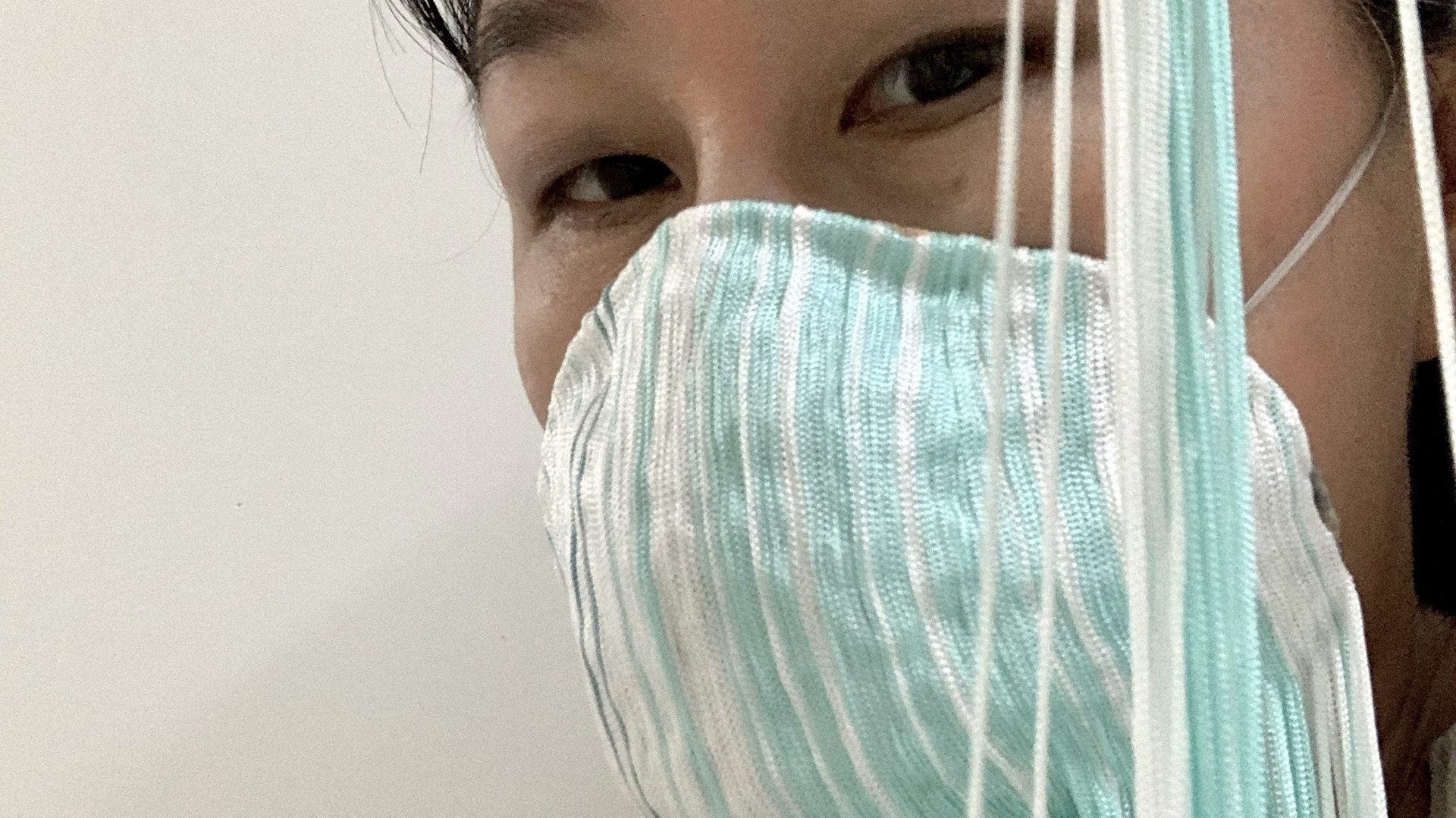

Strings in light Tiffany blue and white cover the face of artist Yuk King Tan as she puts on her latest creation, Breathing Tool. The work, which has over a hundred strings in the two colors attached to a face mask, is Tan’s artistic rendering of what Hong Kong has been through during the coronavirus pandemic. The order of the stripes was created based on the chart of infection rate in the city during March and April.
Breathing Tool isn’t intended to be worn on the streets, but the Australian-born, Hong Kong-based Tan has already made over a hundred functional cloth masks with the help of a seamstress. Each of them is unique, with a variety of colorful patterns comparable to the wardrobe of a fashionista.
“I’ve been sending them to friends and family [abroad]. The masks will be a big deal. When you have a test case of 7.5 million population in Hong Kong, which has a much lower infection rate, something must have been happening here,” she said. Hong Kong residents took to mask wearing faster and in greater numbers than in most jurisdictions. Many in the city believe the masks, along with contact tracing, has helped kept the virus largely at bay. There have been just four deaths and 1,039 infections in Hong Kong since January.
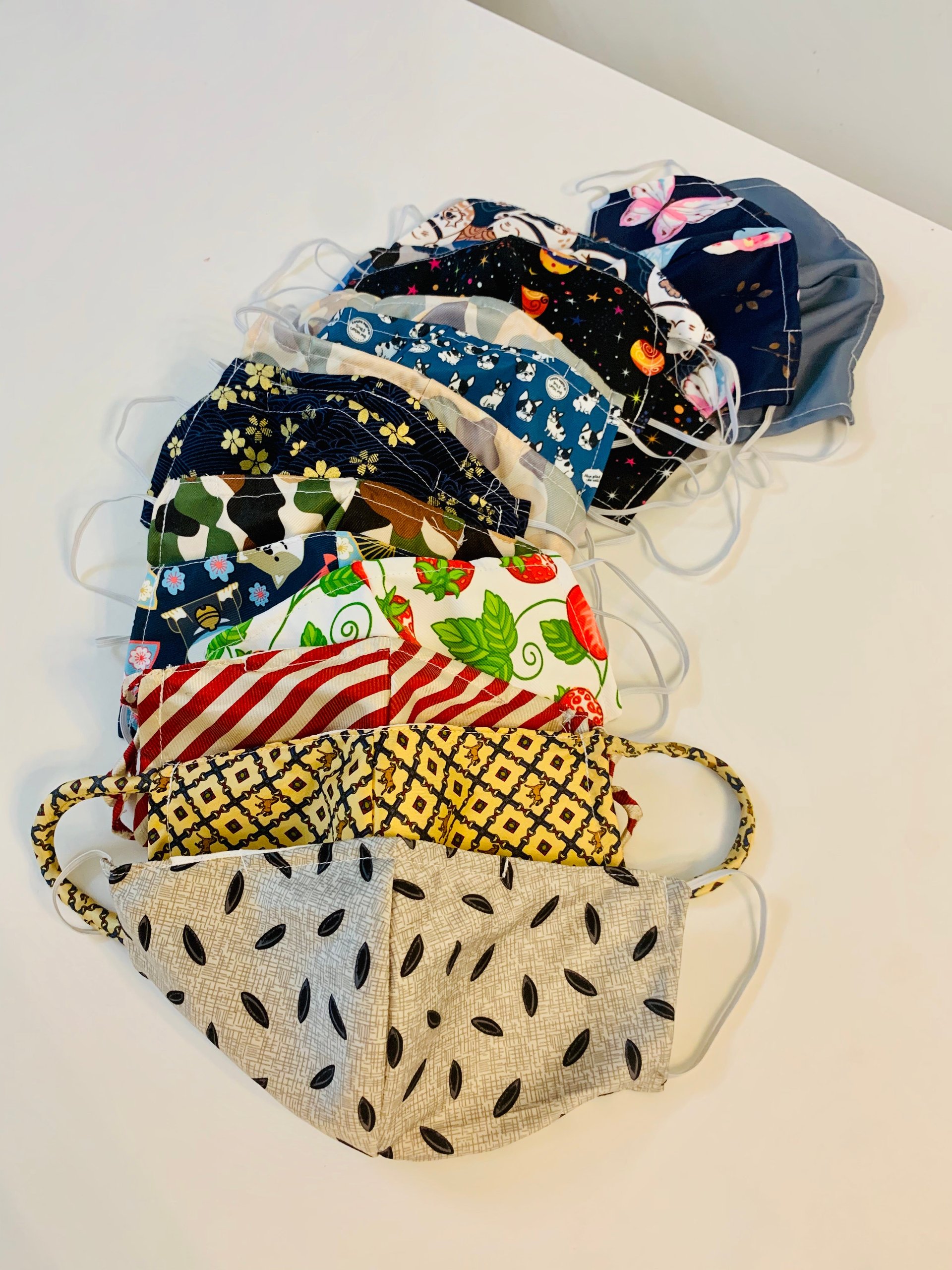
Until recently, many Western countries rejected the practice of mask wearing as medically unnecessary and culturally inappropriate. As the virus spreads, however, nations such as Germany and the US have begun recommending face covering. Berlin announced that face masks are mandatory on public transport from April 27 onwards, joining several other states in Germany. In New York State, face masks are mandatory when social distancing is not possible.
But in Hong Kong, a mask revolution has already been taking place. From the widespread adoption of face masks in January to 3D printed filter capsules and the revival of the the city’s manufacturing industry with local mask production lines, Hong Kong has revolutionized the production and design of face masks.
A medical study published in Nature in the beginning of April shows “surgical face masks could prevent transmission of human coronaviruses and influenza viruses from symptomatic individuals.”
Tan’s masks are based on the design by Kenneth Kwong, a former lecturer in chemistry at the Chinese University of Hong Kong. Better known as K Kwong, he initiated the HK Mask campaign, which teaches people how to make their own reusable cloth mask that comes with a pouch to contain a layer of filter amid of mask shortage.
Kwong, who holds a PhD in chemistry, has invented a nanofiber filter he claims is comparable to the filtering strength of an N95 mask. But on a day-to-day basis, a piece of kitchen towel paper and two pieces of tissue paper provide a sufficient level of protection. The design pattern and user manual have been made an open source in multiple languages.
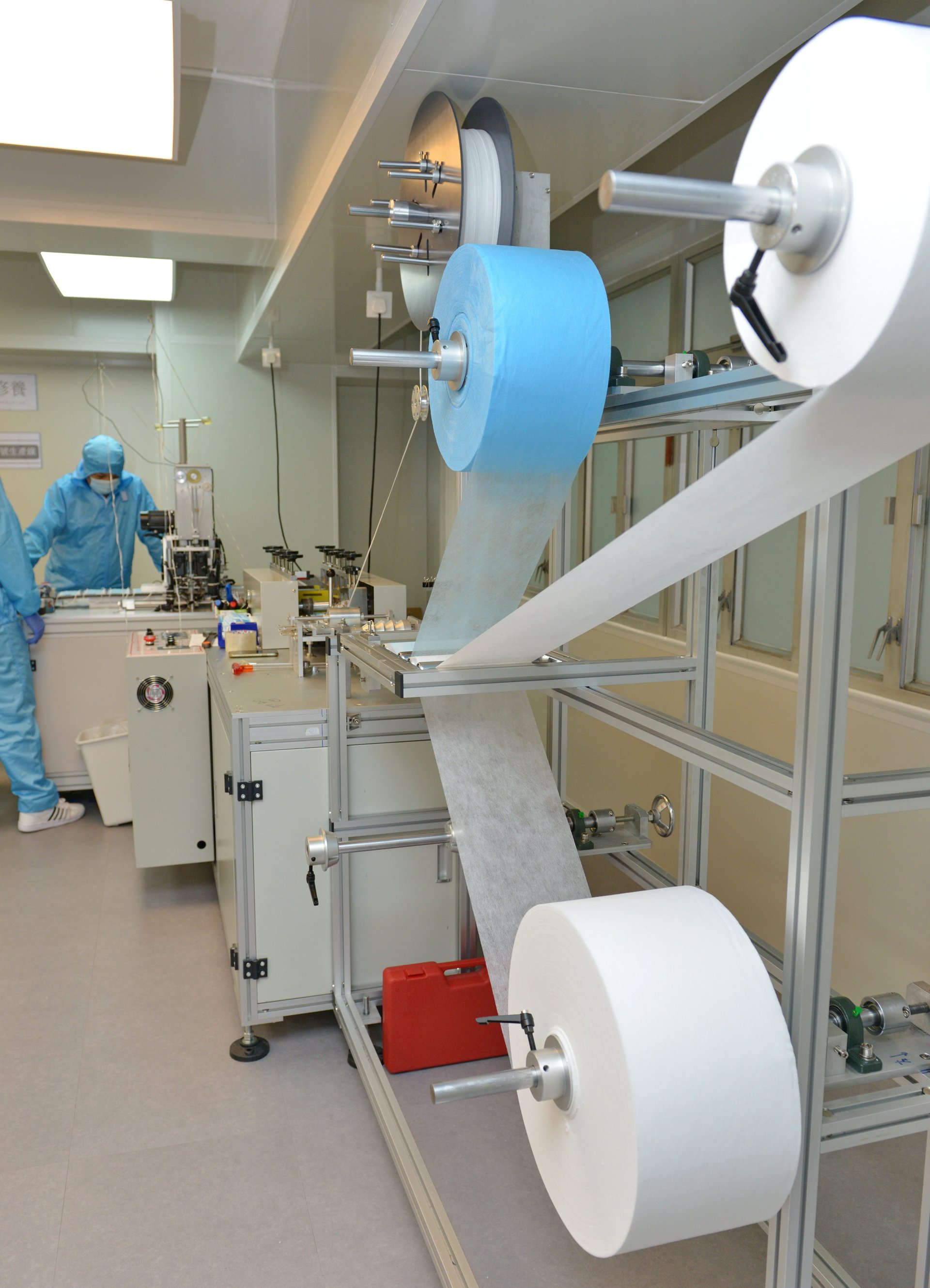
Hong Kong’s innovation around mask making is more than just a way to deal with mask shortages. The community’s self-initiation and creativity in mask production is a continuation of the spirit of the 2019 Hong Kong protests, during which citizens organized themselves for rallies, supplies and even creative outputs, says Phoenix Wong (link in Chinese), an independent political commentator. Medical workers went on an unprecedented strike demanding. Hong Kong close its borders with mainland China. And masks, though were widely used in 2003 during the SARS outbreak that killed 299, have been a symbol of resistance since June.
“People feel that they need to save themselves because they do not trust the governments of Hong Kong and mainland China,” said Wong.
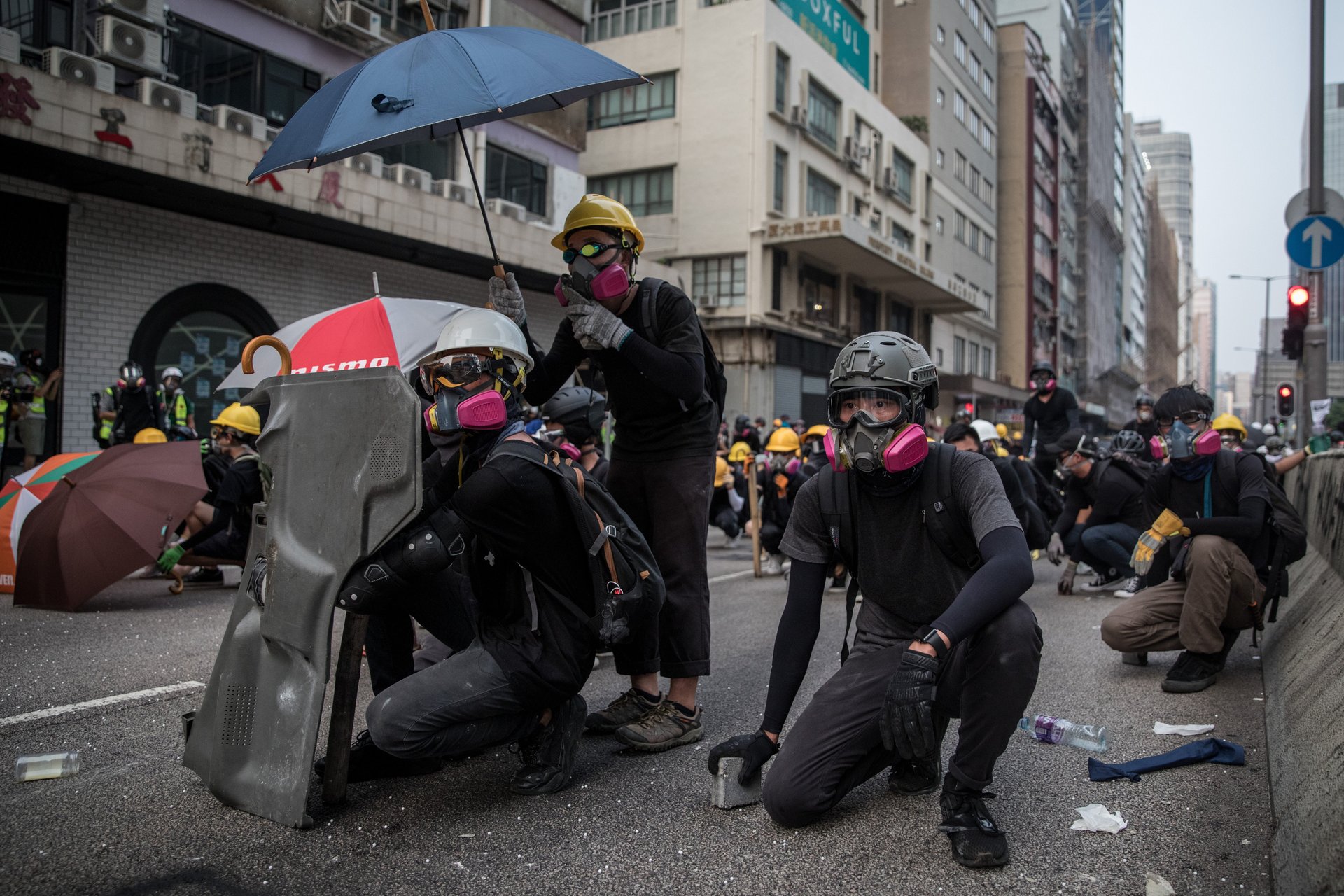
In early February, when Hong Kong confirmed the first death of the coronavirus, chief executive Carrie Lam did not wear masks when she met the press and she ordered government officials not to wear masks either. Reports of China’s coverup of the outbreak of the virus in Wuhan also fuelled people’s distrust.
“People in Hong Kong have been blaming the government for its slow reaction and its refusal to close the border. This city has survived the coronavirus because people make an effort to save themselves,” said Wong.
This has led to the mushrooming of mask factories. In less than two months since the end of February, dozens of local production lines have been set up and begun taking orders online. Some 13 of them have received subsidies from the government.
Online shopping platform HKTV Mall has invested more than HK$2.5 million ($322,578) in a production line expected to produce 60,000 to 100,000 ASTM level 2—more than 98 per cent filtration efficiency—masks per day. Last week HKTV Mall began to take pre-orders online and received 2 million requests.
Another production line M4B Mask (pictured above), formed by four former high school friends who invested HK$3.5 million into mask-making. It has already produced 600,000 pieces of masks since early April.
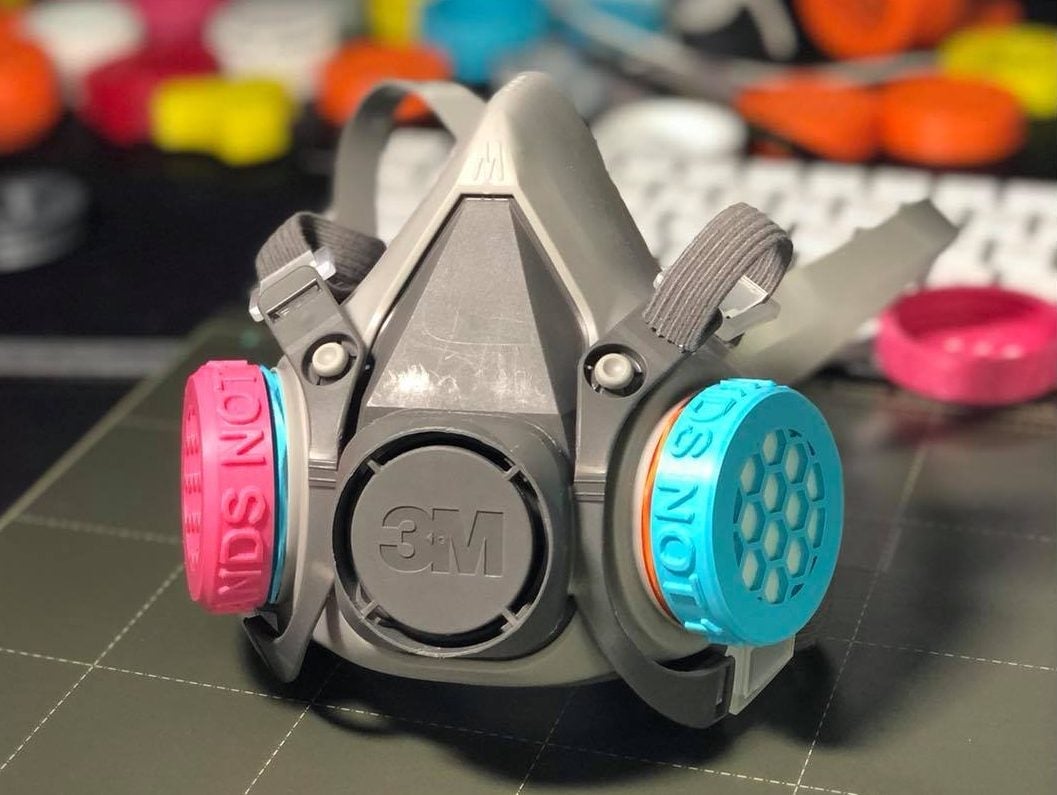
But one studio in Hong Kong’s Kwun Tong district has recently been turned in another kind of factory. Rather than making surgical masks, this studio, which is the office of local online media channel Sing Jai (link in Chinese), has dozens of 3D printers up and running to print filter capsules designed for 3M respirators. Thousands of pairs have already been handed out. Sing Jai did not set a price but instead asked for a donation.
The capsules were the brainchild of the Hong Kong-born designer Alpha Anderson who divides his time between Hong Kong and Australia. Having witnessed the political turmoil during his time in Hong Kong, he said, “I wanted to contribute to the society of Hong Kong […] It is my home, but there was nothing I could do before, until the outbreak.”
The filter capsules are designed for 3M respirators that have been widely used during the protests as gas masks. Users only need to cut a small piece of filter from a surgical face mask and insert it into the capsule. By cutting two small pieces out of a face mask each time, one mask can be used six times.
“During the early stages of the [coronavirus] outbreak, there was not enough surgical masks supply in Hong Kong. We were seeking out ways to extend the life of the surgical masks so we can reserve more for the ones in need of it, like the elderly and medical staff,” said Anderson.
Anderson has made the design an open source, available for free for those who are equipped with 3D printers to make as many as they want. He also formed AlphaTeam Designs with five others to create more designs for Hong Kong people and those in need.
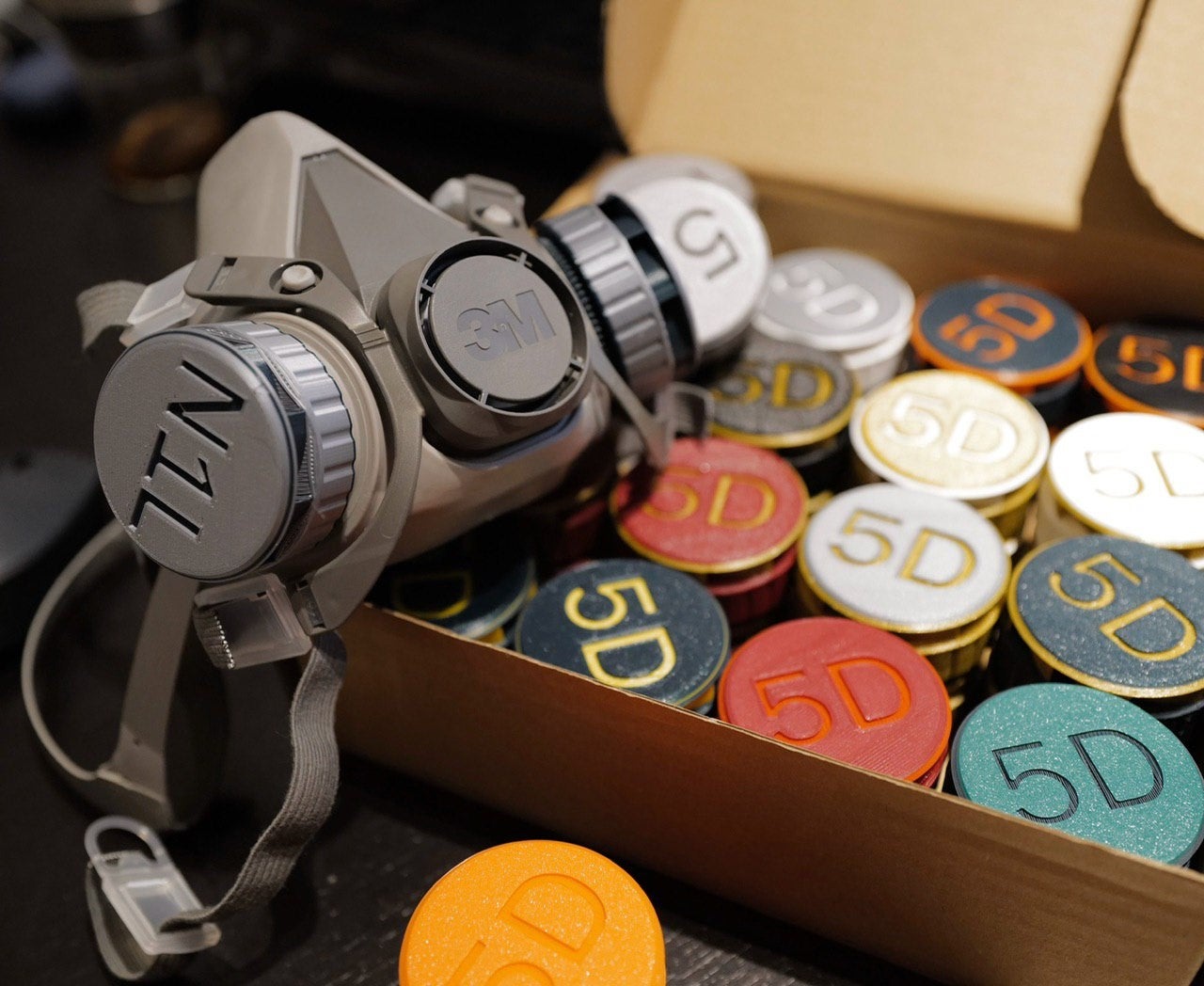
But some people took advantage of his design and made a profit, selling up to HK$240 ($31) per set, upsetting Anderson. “The cost of printing alone is around HK$20 to HK$30 ($2.58 to $3.87).”
He said he has not promoted this internationally as 3M respirators are not commonly used outside of Hong Kong. “But I knew people in Italy and Spain have printed them en masse and one has altered the design to fit into their own mask. Some Canadians have also contacted me. I tried my best to provide the support they need. I’m very happy that people find it useful,” he said.
As of May 3, Hong Kong has had no reports of local infections for two weeks in a row. But Tan, the artist, hopes people can keep their masks on. Besides sending more masks to friends and family, she also helps them source funky cloth masks made by other artists. “There are psychological issues stemming from medieval practices about covering one’s face, which restrict people from attuning to facial nuances. But now people should wear it, understand what it is, and get used to it,” she said.